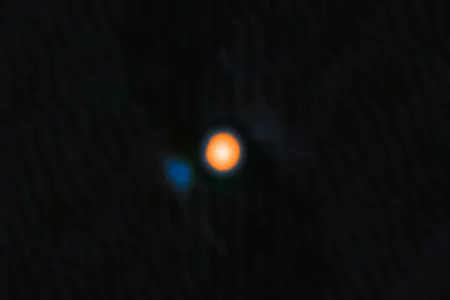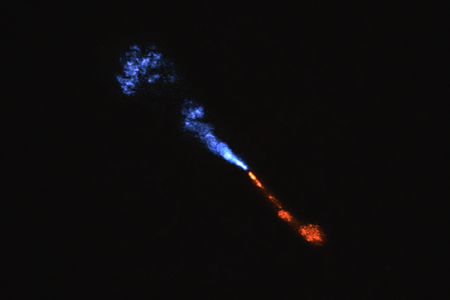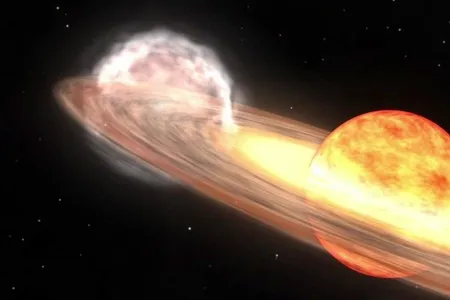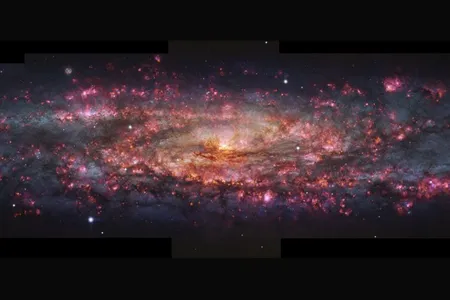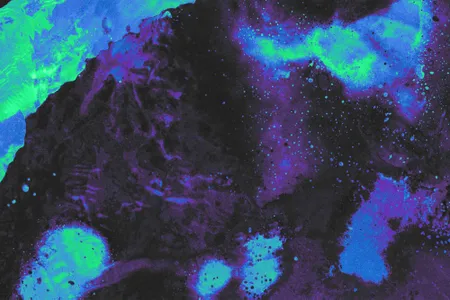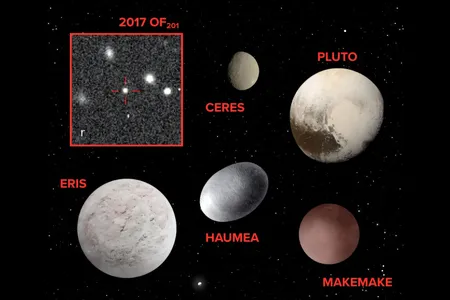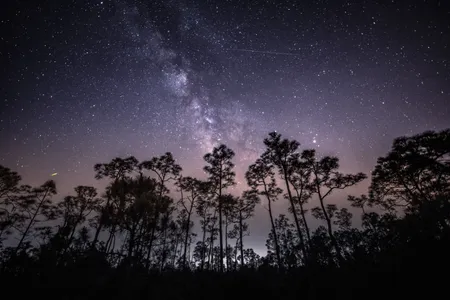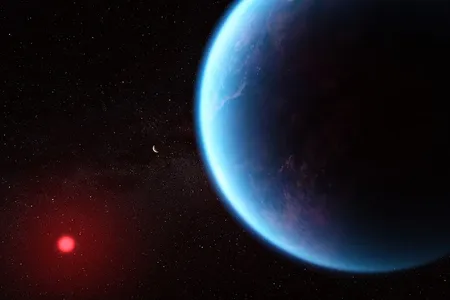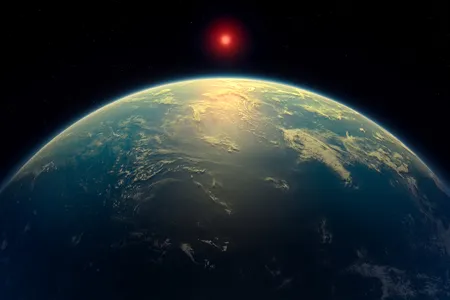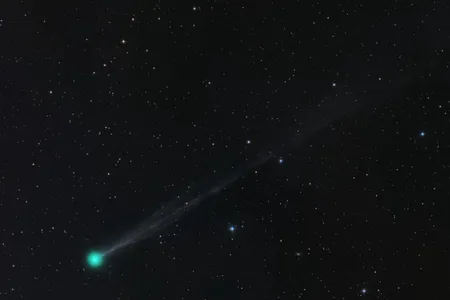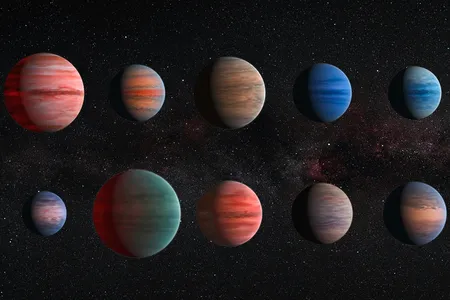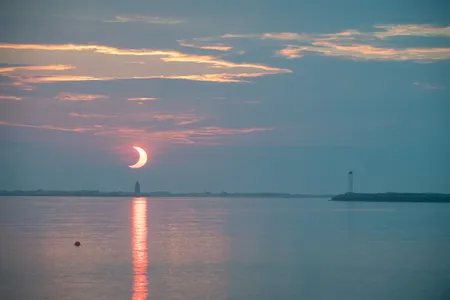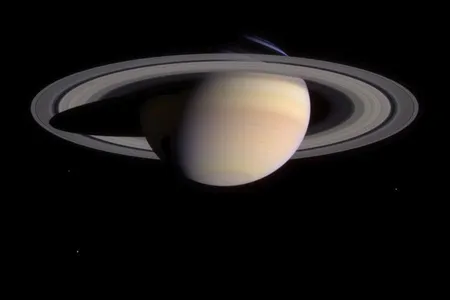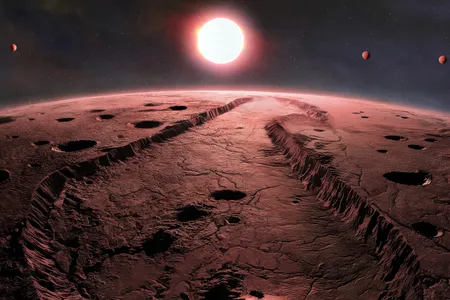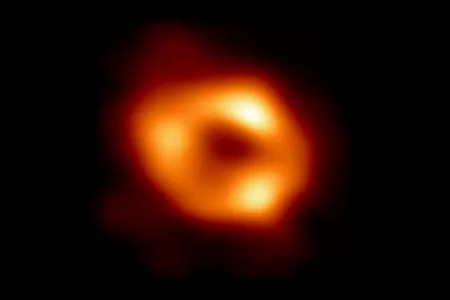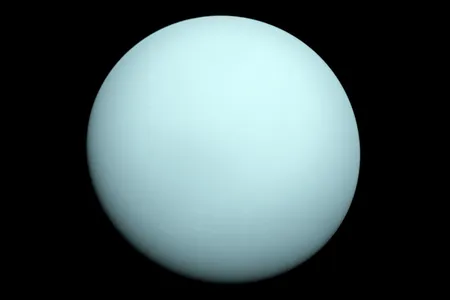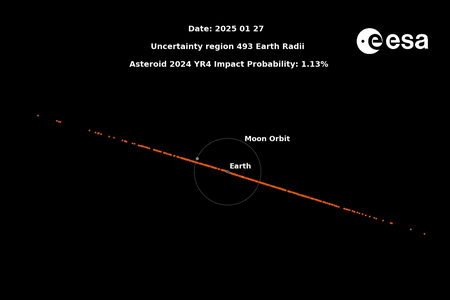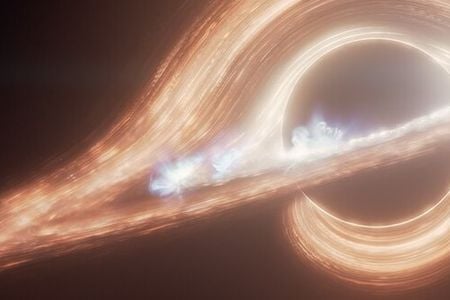Astronomers Say They’ve Finally Spotted Betelgeuse’s Companion Star, Long Predicted to Exist but Never Seen
The discovery, if confirmed, could explain Betelgeuse’s mysterious six-year oscillations in brightness
For the First Time, Astronomers Capture ‘Smoking Gun’ of Early Solar System Formation
Telescopes detected the first stages of hot minerals condensing from gas around a young star called HOPS-315
Rare Appearance of Two Novas at Once Illuminates the Southern Sky. Here’s How to Get a Chance to See It
The “new stars” are best seen from the Southern Hemisphere, but people have spotted them from the United States by looking near the southern horizon
Stunning New Image of the Sculptor Galaxy Captures the Cosmic Landscape in Thousands of Colors
The galaxy sits in a sweet spot that allows astronomers to study it in ways that can’t be applied to even our own Milky Way
Did Water Form in the Earliest Years of the Universe?
A recent study suggests huge volumes of the molecule emerged during the cosmic dawn
Astronomers Discover a Possible Dwarf Planet Far Beyond Neptune, Where There Should Have Only Been Empty Space
As it orbits the sun once every 25,000 years, the celestial body 2017 OF201 travels beyond the Kuiper Belt into a region thought to be largely devoid of objects
These Scientists Say They’ve Identified the Oldest Known Star Chart in the World
A new preprint suggests that an ancient Chinese star catalog dates to 355 B.C.E. But other researchers aren’t convinced, arguing that the original coordinates are misaligned by one degree
How to Watch the Peak of the Spectacular Eta Aquariid Meteor Shower
The shower will peak during pre-dawn hours in early May, as fast-moving meteors trail across Earth’s atmosphere, thanks to debris left behind by Halley’s Comet
A New Analysis Raises Doubts About Potential Hints of Life Recently Detected on a Distant Exoplanet
Astronomers published evidence of possible biosignatures on the planet K2-18b earlier this month, but another look at the data suggests the finding could be statistical noise
Chemical Hints on a Distant Planet Offer ‘Strongest Evidence Yet’ for Life Outside Our Solar System, Astronomers Say
The James Webb Space Telescope spotted possible signatures for life in an exoplanet’s atmosphere. Still, researchers caution it’s far too early to call the findings definitive
A Newly Discovered and Brilliantly Green Comet Is Dazzling Astronomers. Here’s What to Know About the Glowing Celestial Visitor
Initial observations suggest the comet, called C/2025 F2 (SWAN), will continue getting brighter as it approaches the sun. Northern Hemisphere viewers with binoculars can currently spot it in early morning skies
From Worlds That Look Like Cotton Candy to Others Covered in Volcanoes, These Are the Strangest and Most Captivating Exoplanets
Scientists are using an array of instruments to detect other planets, some of which may harbor life—and others that most definitely don’t
How to Watch a Live Stream of the Rare Sunrise Eclipse on Saturday and Catch a Glimpse of Solar ‘Devil Horns’
Early risers can observe a partial solar eclipse in areas of eastern North America on March 29, given clear skies and proper eye protection
Saturn’s Rings Have ‘Disappeared’ in an Optical Illusion. Here’s Why We See This Temporary Vanishing Act
Every 13 to 15 years, Earth crosses through Saturn’s “ring plane,” making the gas giant’s most iconic feature become nearly invisible
Astronomers Find Four New Exoplanets Orbiting a Neighboring Star, the ‘White Whale’ of Planet Seekers
More than 60 years after the first debunked discovery of a planet orbiting Barnard’s Star, the closest single-star system to Earth, a pair of telescopes has revealed multiple rocky worlds around it
A Century Ago, Pioneering Astrophysicist Cecilia Payne-Gaposchkin Showed Us What Stars Are Made Of
The trailblazing Harvard scientist, who documented the dominance of hydrogen and helium in stars, is still inspiring researchers today
This Comprehensive Guide Will Answer the Questions You Have About Black Holes—and Spark Some New Ones
In a new book release, two scientists combine forces to explain the discoveries, developments and theories made in the realm of the densest objects in space
The Six Most Amazing Discoveries We’ve Made by Exploring Uranus
Its bland exterior belies a dynamic world full of surprises
The ‘Riskiest Asteroid Ever’ Is No Longer a Threat as Impact Probability Drops to Near Zero
As astronomers predicted, asteroid 2024 YR4 is not expected to hit Earth in 2032. This week, NASA gave the “all clear”
James Webb Telescope Reveals a Dazzling Light Show From the Milky Way’s Black Hole
Unpredictable bursts of light are pulsing from the debris surrounding Sagittarius A*, offering new insights into the mysterious behavior of the most massive object in our galaxy
Page 1 of 21
